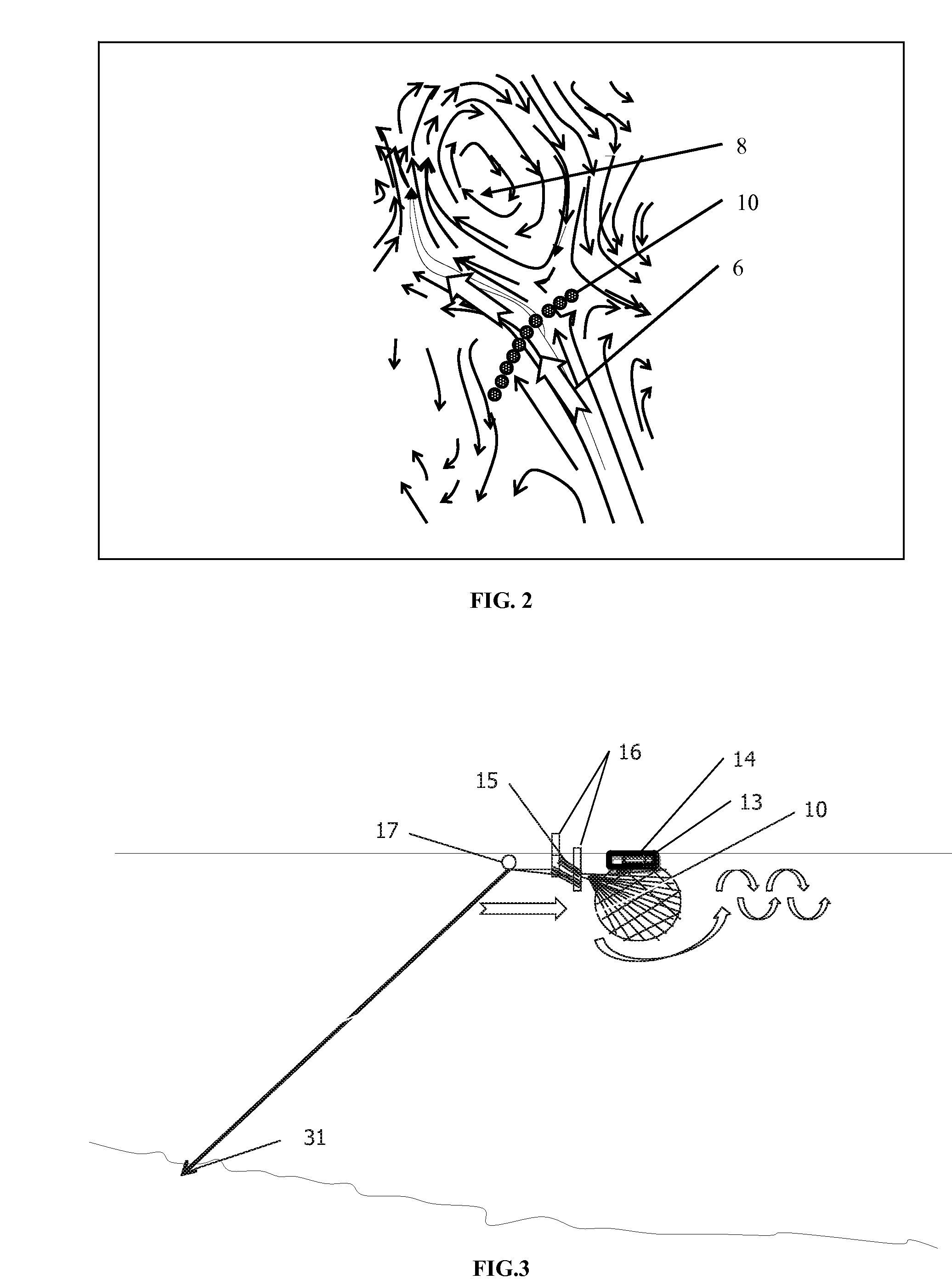Fluid property regulator
a technology of fluid property and regulator, which is applied in the direction of mechanical power devices, machines/engines, mechanical equipment, etc., can solve the problems of prohibitively difficult to adapt conventional internal-flow piping technology to achieve water property regulation for large applications, and insufficient adaptation of presently available internal pipe conduit technology, etc., to achieve the effect of reducing greenhouse gas emissions, improving reflectivity, and reducing the average atmospheric temperatur
- Summary
- Abstract
- Description
- Claims
- Application Information
AI Technical Summary
Benefits of technology
Problems solved by technology
Method used
Image
Examples
Embodiment Construction
[0050]The Fluid Property Regulator methods, and system embodiments of this invention generally have at least one moored or self-propelled body of spherical, cylindrical or other shape (e.g. an orb) that causes material transfer and fluid flow to regulate material properties when such an orb is either moved in a fluid or held stationary in a flow stream. Transfer of portions of the material surrounding the system may alter the material property profiles of the material (e.g. fluid) as that material proceeds past the system in a flow field. Many features of the methods, system and apparatus, beyond those described below, will be apparent to skilled artisans. The following descriptions generally progress from one feature of emphasis to another feature of emphasis with a wide variety of additional embodiments being possible based on combinations of the features that are highlighted among the various figures and descriptions.
[0051]Referring now to FIG. 1 there is shown an example instant...
PUM
 Login to View More
Login to View More Abstract
Description
Claims
Application Information
 Login to View More
Login to View More - R&D
- Intellectual Property
- Life Sciences
- Materials
- Tech Scout
- Unparalleled Data Quality
- Higher Quality Content
- 60% Fewer Hallucinations
Browse by: Latest US Patents, China's latest patents, Technical Efficacy Thesaurus, Application Domain, Technology Topic, Popular Technical Reports.
© 2025 PatSnap. All rights reserved.Legal|Privacy policy|Modern Slavery Act Transparency Statement|Sitemap|About US| Contact US: help@patsnap.com



